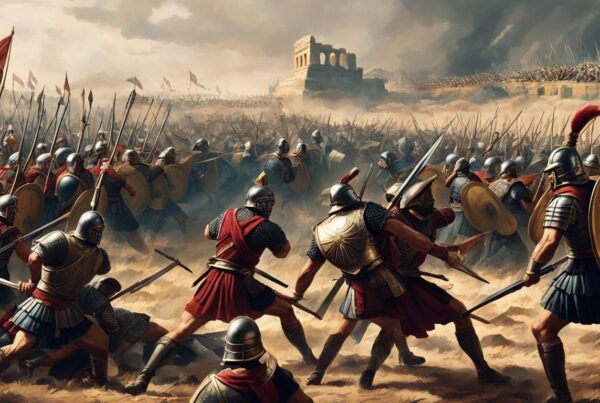If you’re a fan of Virginia Woolf’s classic literature and interested in exploring her works through audiobooks, you’ve come to the right place. In this audiobook review, we’ll take a deep dive into the timeless and thought-provoking novel, “To the Lighthouse.”
Join us as we analyze Woolf’s unique writing style, explore the complex themes and characters of the novel, evaluate the quality of the audiobook narration and performance, and discuss the historical and cultural context behind the story. Whether you’re listening to this audiobook for the first time or revisiting it after years, you’ll gain a new understanding and appreciation for Woolf’s literary masterpiece.
So, let’s dive into this audiobook review and discover the magic of “To the Lighthouse” by Virginia Woolf.
Introduction to Woolf’s Classic “To the Lighthouse”
Virginia Woolf’s masterpiece “To the Lighthouse” has been recognized as a literary classic for decades. Published in 1927, the novel explores timeless themes and utilizes innovative techniques that were ahead of their time. Today, it remains a staple in the literary canon and a favorite among readers and scholars alike.
The novel is set in the Hebrides, a group of islands off the coast of Scotland, and follows the Ramsay family as they vacation in their summer house. Over the course of the novel, Woolf masterfully intertwines past, present, and future through her unique stream-of-consciousness narrative style.
But what makes “To the Lighthouse” such a significant work of literature? In order to fully appreciate the novel, we must first dive into the author’s background and the historical context in which it was written.
“Every season is likeable, and wet days and fine, red wine and white, company and solitude. Even sleep, that deplorable curtailment of the joy of life, can be full of dreams; and the most common actions ~ brushing teeth, washing dishes, making tea ~ can be a pleasure when it is understood that they are merely opportunities for contemplation.” – Virginia Woolf, “To the Lighthouse”
Plot Summary of “To the Lighthouse”
“To the Lighthouse” follows the lives of the Ramsay family and their guests as they vacation on the Isle of Skye in Scotland. The first section of the novel focuses on Mrs. Ramsay, the matriarch of the family, who spends her time trying to reconcile various tensions among her family and friends. However, her efforts are ultimately in vain and she dies before the family can return to the island.
The second section jumps ahead ten years to when the Ramsay family returns to the island, this time without Mrs. Ramsay. The novel shifts its focus to Mr. Ramsay and his struggle to come to terms with his own mortality and to repair his strained relationship with his son. This section also reintroduces the remaining members of the original cast and follows their reflections on the past decade.
The final section of the novel finds the Ramsay family and their guests finally making the long-awaited trip to the lighthouse. Along the way, the characters reflect on their memories of Mrs. Ramsay and the previous trips they took to the island. The novel ends with a sense of closure and emotional resolution as the characters come to terms with their pasts and look towards the future.
Analysis of Characters in “To the Lighthouse”
In “To the Lighthouse,” Virginia Woolf presents a complex web of characters with rich inner lives and unique perspectives on the world around them. Through careful observation and introspection, Woolf paints a portrait of human nature that is both universal and deeply personal.
The Ramsay Family
At the heart of the novel are the members of the Ramsay family, who are spending the summer at their vacation home on the Isle of Skye. Mrs. Ramsay is the matriarch of the family, a nurturing and empathetic woman who is beloved by all. Mr. Ramsay, on the other hand, is a more difficult figure, prone to fits of anger and insecurity.
Their eight children play a variety of roles in the narrative, each representing a different facet of human experience. James, the youngest, grapples with the loss of his mother and the passage of time. Cam, the second-youngest, is haunted by unfulfilled desires and a sense of isolation. Andrew, the eldest son, struggles with his relationship to his father and the weight of familial expectations.
The Other Inhabitants of the Isle of Skye
Woolf also populates the novel with a number of other memorable characters, including the painter Lily Briscoe and the poet Charles Tansley. Through their interactions with the Ramsay family and each other, Woolf explores themes of artistic creation, intellectualism, and social status.
Significance to the Overall Themes of the Novel
By carefully analyzing the characters in “To the Lighthouse,” readers can gain a deeper understanding of the novel’s themes and ideas. Woolf’s examination of relationships, gender roles, and the human psyche all intersect in the lives of her characters, creating a rich and multi-dimensional narrative.
Themes Explored in “To the Lighthouse”
Virginia Woolf’s “To the Lighthouse” delves into a multitude of themes that continue to resonate with readers today. The novel’s exploration of time and memory is a prominent thread, weaving through the narrative and highlighting the subjective nature of human experience.
Another central theme is that of womanhood and the constraints and expectations placed upon women in society. Woolf’s characters grapple with these issues, challenging the traditional roles assigned to them and advocating for independence and personal fulfillment.
The novel also explores the complex nature of human relationships, particularly within families. Through the Ramsays and the guests at their summer home, Woolf presents a nuanced portrayal of the joys and challenges of familial bonds.
Furthermore, “To the Lighthouse” delves into the nature of creativity and the pursuit of artistic expression. As Lily Briscoe struggles to capture the essence of the Ramsay family and their surroundings in her painting, Woolf offers insight into the creative process and the challenges faced by artists.
Overall, “To the Lighthouse” is a rich and multifaceted exploration of the human experience, with themes that continue to provoke thought and inspire further analysis.
Writing Style and Techniques in “To the Lighthouse”
One of the defining features of Virginia Woolf’s writing style in “To the Lighthouse” is her use of a stream-of-consciousness narrative, which allows readers to experience the inner thoughts and emotions of the characters in real-time. This technique creates a sense of immediacy and intimacy, enabling readers to connect with the characters on a deeper level.
Woolf also employs the use of symbolism throughout the novel to convey deeper meanings and ideas. The lighthouse itself, for example, serves as a metaphor for the search for meaning and purpose in life.
In addition to these literary techniques, Woolf also experiments with the structure of the novel, using shifts in time and perspective to create a fluid sense of time and emphasize the interconnectedness of all things.

“Woolf’s stream-of-consciousness narrative creates a sense of immediacy and intimacy.”
Audiobook Narration and Performance
When it comes to audiobook versions of “To the Lighthouse,” the narration and performance play a crucial role in capturing the essence of Woolf’s literary masterpiece. The audiobook is narrated by the talented Virginia Leishman, who does an exceptional job of bringing the characters and setting to life.
Leishman’s voice acting is spot on, and she expertly conveys the emotions and nuances of each character, making them feel distinct and authentic. Her pacing is also commendable, striking a balance between the slower, introspective moments and the more lively, action-packed scenes. Overall, her performance effectively enhances the experience of listening to the audiobook and immerses the listener in Woolf’s world.
If you’re a fan of audiobooks or new to the format, this version of “To the Lighthouse” is a must-listen. With its exceptional narration and performance, it ensures a captivating and engaging listening experience that complements the beauty and depth of Woolf’s prose.
Historical and Cultural Context of “To the Lighthouse”
Understanding the historical and cultural context of “To the Lighthouse” provides a deeper appreciation of the themes and ideas present in Virginia Woolf’s classic novel. Written in the early 20th century, Woolf’s work reflects the rapidly changing society and attitudes of the time.
At the turn of the century, women’s suffrage movements and changing gender roles were making strides in society. Woolf herself was a proponent of feminism and challenged conventional ideas surrounding femininity and power in her writing.
The novel’s setting on the Isle of Skye in Scotland also holds historical significance, as it was a popular location for wealthy British families during the Edwardian era. The characters in the novel, particularly the Ramsay family, are reflective of this privileged social class and the attitudes and values that came with it.
Woolf’s writing style was also heavily influenced by the Modernist movement, which sought to break away from traditional storytelling structures and experiment with new forms. “To the Lighthouse” incorporates these characteristics through its use of stream-of-consciousness narration, symbolism, and nonlinear storytelling.
Overall, the historical and cultural context surrounding “To the Lighthouse” illuminates the underlying themes and messages of the novel and provides a lens through which readers can understand the significance and impact of Woolf’s work.
Relevance and Impact of “To the Lighthouse” Today
Despite being published almost a century ago, Virginia Woolf’s “To the Lighthouse” continues to be relevant and impactful in contemporary society. Its exploration of themes such as time, memory, gender roles, and the nature of human relationships resonate with readers today, as they did when the novel was first written.
Woolf’s experimental writing style, particularly her use of stream-of-consciousness narrative and symbolism, have also had a lasting impact on modernist literature and continue to influence writers today.
The novel’s continued relevance can be seen through its frequent inclusion in academic syllabi, its numerous adaptations into stage plays and films, and its ongoing popularity among readers worldwide.
Impact on Modern Literature
The impact of “To the Lighthouse” on modern literature is evident through the countless writers who have been influenced by Woolf’s writing style and thematic exploration. In particular, Woolf’s use of stream-of-consciousness narrative has had a significant impact on modernist literature and continues to be used by contemporary writers.
Woolf’s ability to capture the complexities of human thought and emotion through her writing has also had a lasting impact on literature. Her groundbreaking work has paved the way for other writers to push the boundaries of traditional narrative structures and explore more experimental forms of storytelling.
Enduring Themes
The enduring themes of “To the Lighthouse” continue to resonate with readers today. The novel’s exploration of the nature of time and memory, the role of women in society, and the complexities of human relationships are themes that remain relevant and impactful in contemporary society.
Readers continue to be drawn to the novel’s exploration of the human condition and its ability to offer insights into the complexities of our inner lives.
| Themes | Examples from the Novel |
|---|---|
| Time and memory | “For the great plateful of blue water was before her; the hoary Lighthouse, distant, austere, in the midst; and on the right, as far as the eye could see, fading and falling into the sea, was a high coastline wavering away like the outspread wings of infinity.” |
| Gender roles | “For he see…that the proportion of failure is infinitely greater than the proportion of success. He see…that women have served all these centuries as looking glasses possessing the magic and delicious power of reflecting the figure of man at twice its natural size.” |
| Human relationships | “For the perpetual movement of the waves calmed her. The feverish inconstancy of life; the faltering spin drift of sound; the to-and-fro of indecision that had so lately trodden upon her heels had lulled together into this tone of quiet.” |
In conclusion, “To the Lighthouse” continues to have a significant impact on modern literature and remains relevant and impactful in contemporary society. Its exploration of enduring themes, its experimental writing style, and its ability to offer insights into the complexities of the human experience make it a timeless classic.
Comparison with Other Works by Virginia Woolf
While “To the Lighthouse” stands as a literary masterpiece in its own right, it is also important to consider it within the context of Virginia Woolf’s broader body of work. Through comparison with other works by the author, we can gain a deeper understanding of her themes, writing style, and artistic vision.
One of Woolf’s most well-known novels, “Mrs. Dalloway,” shares a similar experimental structure to “To the Lighthouse,” with its use of stream-of-consciousness narration and exploration of the inner lives of characters. However, while “To the Lighthouse” focuses primarily on the Ramsay family and their relationships, “Mrs. Dalloway” features a larger cast of characters and takes place over the course of a single day in London.
Another notable work by Woolf, “Orlando,” is notable for its exploration of gender and identity, a theme that is also present in “To the Lighthouse” through the character of Lily Briscoe. However, while “To the Lighthouse” presents Lily’s struggles with societal expectations and her own desire for creative fulfillment, “Orlando” takes a more fantastical approach through the character’s transformation into a woman.
Overall, while each of Woolf’s works stands on its own merits, comparison with “To the Lighthouse” underscores the consistent themes and approaches that run throughout her writing. Through reading and analyzing her complete oeuvre, readers can gain a richer understanding of Woolf’s unique contributions to the literary world.
Critical Reception of “To the Lighthouse”
The critical reception of “To the Lighthouse” has been largely positive, with many reviewers hailing it as a masterpiece of modernist literature. When it was first published in 1927, however, the novel received mixed reactions, with some critics finding Woolf’s experimental style and non-linear narrative confusing and difficult to follow.
Over time, however, “To the Lighthouse” has come to be recognized as one of the most important literary works of the 20th century and a crucial contribution to the modernist movement. Critics have praised its rich character development, striking use of symbolism, and insightful commentary on the human condition.
“One of the most beautiful novels of the twentieth century” – Malcolm Bradbury, The Guardian
“Virginia Woolf was a great writer, the first woman to lift her vision as high as the stream of consciousness technique could carry it.” – The New York Times
While the novel continues to be widely acclaimed, there have been some criticisms of Woolf’s portrayal of women and her use of colonialist language. These concerns reflect changing attitudes towards gender and race in contemporary society and the ongoing need to re-examine literary classics through a critical lens.

Impact of “To the Lighthouse” on Literature
Virginia Woolf’s literary legacy is indisputable, and “To the Lighthouse” stands as a shining example of her contribution to modernist literature. The novel’s experimentation with form, use of stream-of-consciousness narrative, and exploration of complex themes have influenced countless writers and contributed to the development of the literary genre.
The impact of “To the Lighthouse” on literature can be seen in the works of authors who have been influenced by Woolf’s style and themes. Numerous writers have cited her as an inspiration, including Joyce Carol Oates, Margaret Atwood, and Toni Morrison. Woolf’s writing has also been credited with helping to pave the way for feminist literature and the portrayal of women’s experiences in the modern world.
The significance of “To the Lighthouse” is evident in the numerous adaptations and homages to the novel in popular culture. The work has been adapted into plays, operas, ballets, and even a video game. Woolf’s novel remains a beloved and revered classic, continuing to inspire readers and writers alike.
Recommended Editions and Formats of “To the Lighthouse”
For readers looking to experience this literary classic, there are several editions and formats available.
The print edition is perfect for those who enjoy the feel of a physical book. The Penguin Classics version features an introduction by Eudora Welty and is widely considered to be one of the best print editions available.
Those who prefer e-books can enjoy “To the Lighthouse” in digital format. The Kindle edition offers a convenient reading experience, while the Barnes & Noble Nook edition features annotations and commentary to enhance the reader’s understanding of the text.
Audiobook enthusiasts can enjoy “To the Lighthouse” in this format, narrated by Phyllida Law. The audiobook brings the story to life with a captivating performance that captures the essence of Woolf’s prose. It’s available for download on Audible and other audiobook platforms.
Table of Recommended Editions and Formats
| Edition/Format | Advantages | Disadvantages |
|---|---|---|
| Tangible reading experience | Heavy and not easily transportable | |
| E-book (Kindle) | Convenient, easy to read | Dependent on technology, not as tactile as print edition |
| E-book (Nook) | Features annotations and commentary | Dependent on technology, not as tactile as print edition |
| Audiobook | Can be enjoyed hands-free, great for multitasking | Not ideal for visual learners, dependent on technology |
Ultimately, the choice of the edition or format of “To the Lighthouse” will depend on the reader’s personal preferences and reading habits. Regardless of the chosen format, Woolf’s prose and mastery of storytelling are sure to captivate and inspire readers for generations to come.
Reader Feedback and Popular Opinions on “To the Lighthouse”
Reading “To the Lighthouse” has been a truly spectacular experience for countless individuals over the years. We’ve scoured reader feedback and popular opinions to provide a clearer picture of how people engage with Virginia Woolf’s literary masterpiece.
Positive Feedback and Glowing Reviews
Many readers praise Woolf’s poetic language and vivid imagery, with one reviewer stating, “I was astounded by her ability to craft such beautiful sentences.” Others note the unique narrative style with stream-of-consciousness storytelling, describing it as “groundbreaking” and “ahead of its time.” Additionally, the characters in “To the Lighthouse” are often cited as a highlight, with some remarking on their complexity and relatability.
Critical Voices and Varied Opinions
However, “To the Lighthouse” is not without its detractors. Some readers find the novel difficult to understand or too dense, with one reviewer stating, “I struggled to get through this book due to the complex language and lack of clear plot.” Additionally, some critics have raised concerns about Woolf’s portrayal of women and the potentially problematic aspects of the novel’s themes and symbols.
Overall Impact and Cultural Significance
Despite the mixed reactions, it’s clear that “To the Lighthouse” has had a significant impact on readers and the literary world as a whole. Its enduring themes, unique narrative style, and poetic language continue to resonate with audiences today, cementing its status as a true classic of modernist literature.
Discussion of Challenging Themes and Content
As with many literary classics, “To the Lighthouse” explores challenging themes and may contain content that some readers find controversial. The novel grapples with complex issues such as the passage of time, the limitations of language and communication, and the role of women in society. Additionally, there may be instances of racism and ableism in the text that readers should be aware of.
It is important to note, however, that these challenging themes and potentially controversial elements are essential to the novel’s overall message and artistic vision. Through exploring these topics, Virginia Woolf offers a nuanced and thought-provoking commentary on the human condition and the world we inhabit.
Readers who are uncomfortable with the content may want to familiarize themselves with the themes and issues in advance, engage in discussions with fellow readers, or seek out resources and analysis to better understand the novel’s purpose and significance.
Conclusion: Final Thoughts on “To the Lighthouse” Audiobook Review
In conclusion, our comprehensive audiobook review of Virginia Woolf’s literary masterpiece, “To the Lighthouse,” has provided readers with a detailed analysis of the novel’s themes, characters, plot, and writing style. Through our exploration of the audiobook narration and performance, we have offered insights into the effectiveness of this format in bringing Woolf’s work to life.
With its enduring relevance and impact on the literary world, “To the Lighthouse” remains a timeless classic that continues to captivate and inspire readers. Its themes and ideas, from the nature of time and memory to the role of women in society, remain relevant and thought-provoking to this day.
Our recommended editions and formats of “To the Lighthouse,” from print books to e-books to audiobooks, offer readers a variety of options for engaging with this literary masterpiece. While the novel may contain challenging themes and potentially controversial content, we believe that its significance and purpose make it a worthwhile read.
Overall, we highly recommend “To the Lighthouse” to anyone who appreciates thought-provoking and artfully crafted literature. Whether you choose to read it in print or engage with it through an audiobook, we are confident that this novel will leave a lasting impression on you.



